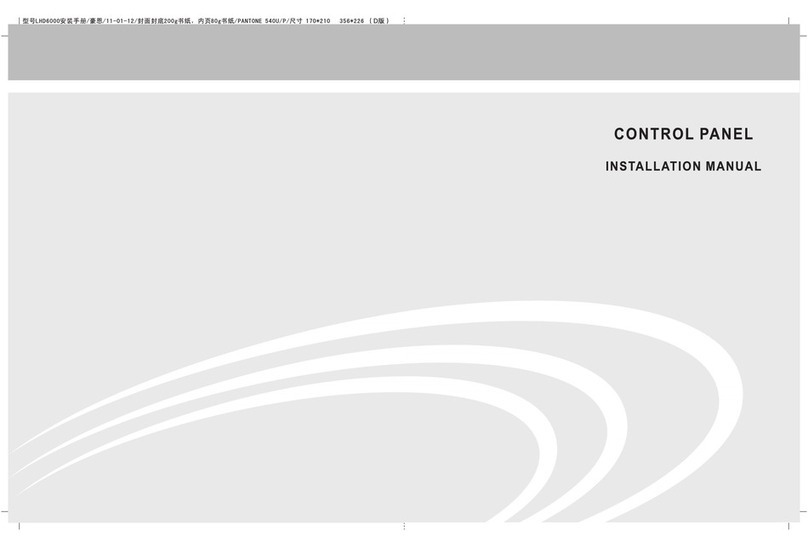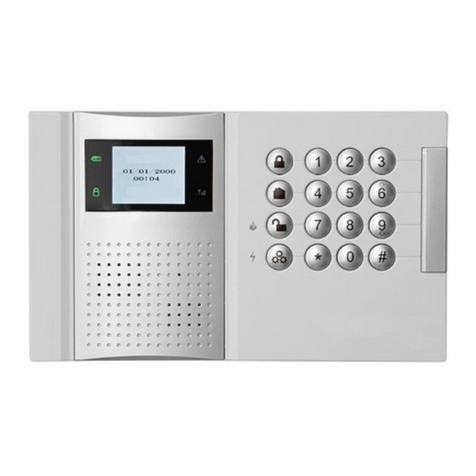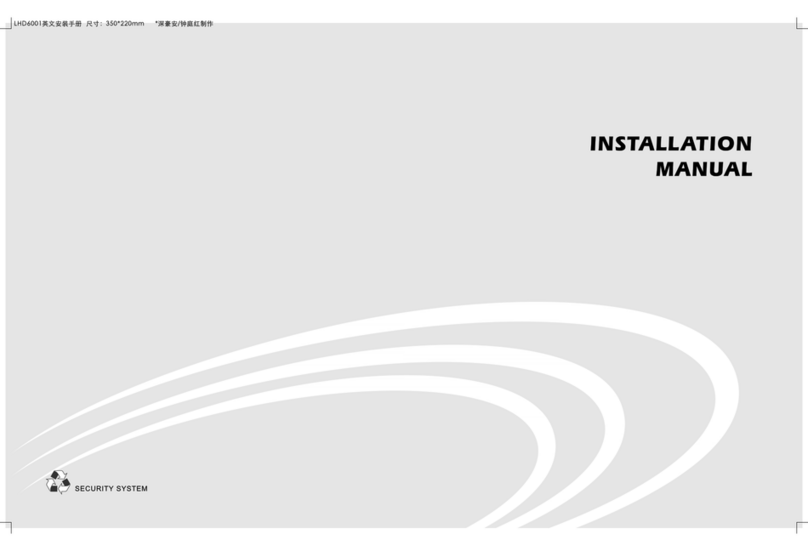CONTENTS
System installation figure........................................................................................... ........... 1
1. General............................................................................................................................. 2
2. Main functions &features.................................................................................................... 2
3. Terms definitions................................................................................................................ 2
4. Notice before using............................................................................................................ 3
5. System installation............................................................................................................. 3
5.1 General requirements of engineering installation.......................................................... 3
5.2 Control panel installation....................................................................................... 3
5.3 AC connection............................................................................................................. 3
5.4 Standby power connection........................................................................................... 3
5.5 Keypad installation...................................................................................................... 4
5.6 Bell output terminal...................................................................................................... 6
5.7 Anti-tamper switch installation...................................................................................... 6
5.8 Auxiliary power output terminal.................................................................................... 6
5.9 Loop input................................................................................................................... 6
5.10 Telephone line connection.......................................................................................... 6
5.11 Telescopic antenna installation................................................................................... 7
5.12 AC power connection................................................................................................. 7
6. Keypad panel composition................................................................................................. 7
7. Alarm mode....................................................................................................................... 8
8. Zone type and zone number............................................................................................... 8
8.1 Zone type..................................................................................................................... 8
8.2 zone number............................................................................................................... 9
9. Keypad operation.............................................................................................................. 9
9.1 Password input............................................................................................................ 9
9.2 Function key operation................................................................................................. 9
9.3 Parameters setting.................................................................................................... 10
10. Wireless remote controller operation.............................................................................. 19
10.1 Arm-away.............................................................................................................. 19
10.2 Arm-stay................................................................................................................ 19
10.3 Disarm.................................................................................................................. 19
10.4 Panic..................................................................................................................... 19
11. Remote phone operation................................................................................................ 20
11.1 Telephone disarm .................................................................................................. 20
11.2 Telephone arm-away............................................................................................... 20
11.3 Telephone arm-stay................................................................................................. 20
3. Alarm warning devices such as bells may not alert people if they are installed in an improper position. If the
alarm bell is installed outside, there are less likely to waken or alert people inside the bedrooms.
4. Telephone line used to transmit alarm signals may be out of service for any reason, or can not perform
communication normally for vicious attack.
5. Unsuitable installation position of detectors. If smoke detector is installed in an improper position, it is not easy
for smoke to enter the detecting area. Because of doors or walls, it is hard for the detector to sense fires in other
rooms, e.g. the detector in the first floor can not sense fires in the second floor.
6. Lack of maintenance may lead to the system disabled. Weekly testing is required to ensure proper operation of
the system.
14. Troubleshooting
The controller plug is not inserted in
DC socket, or it is not connected well Check the connection of the plug
or replace the socket.
Check whether keypad is wired
incorrectly or not, and wire
Keypad is wired incorrectly
Telephone can not work normally
as the system is connected into
telephone network
Few ringing attempts lead the
system to hang up the phone
automatically
Wireless remote controller is too far
from the controller or blocked by
obstacles.
Increase ringing attempts. Refer
to ringing attempts adjustment
Replace it with a new battery
Keypad logout
Battery is drained
Enroll the detector again.
Do not enroll wireless detector or
the detector is removed
Remove the keypad from the
control panel, then connect it to
the control panel again or restart
the system
Do not set correct phone number
User's phone is busy during alarm Set two more phone numbers
Set correct phone number
The system does not dial to alarm
when alarm happens
Potential reasons Solutions
The zone is bypassed Cancel bypass of the zone
When disarm, zone 1,2,3 do not
alarm; when arm-stay, zone 2 do
not alarm. Operate normally
Types of fault
Remote controller can not operate
the system
Keypad can not operate the system
Wireless zones can not monitor
normally
The indicator of power on keypad
does not work
The system has no feedback when
zone is touched
Adjust the distance or angle
be tw een th e sy st em and
wireless remote controller
Enroll wireless remote controller
without programming Enroll wireless remote controller
with programming
When emergencies happen or the
system enters delay status, it will
not arm
Reset the time for arm/disarmTime for arm/disarm may be the same
Refer to Timed arm/disarm
Timed arm/disarm can not work
Timed arm/disarm is not set in valid
status Set timed arm/disarm in valid status






























